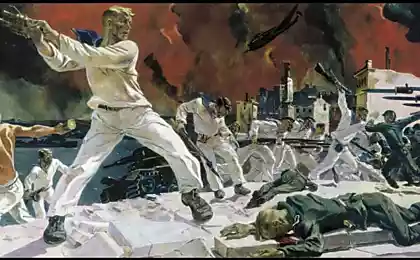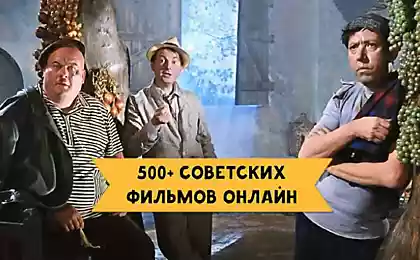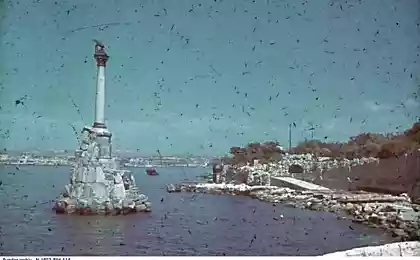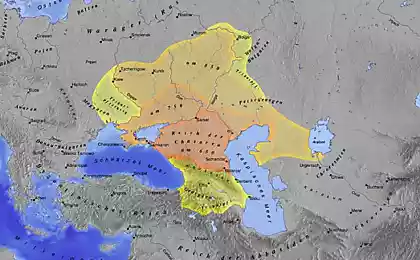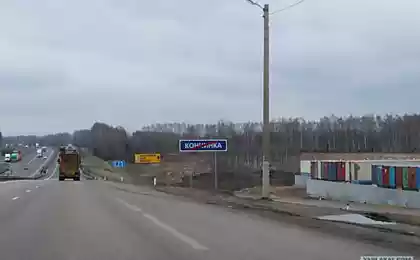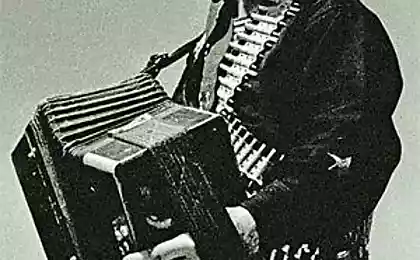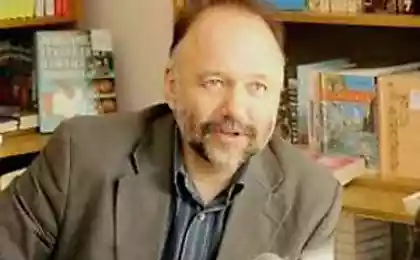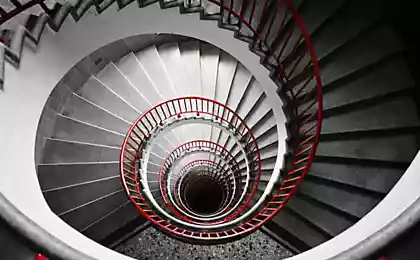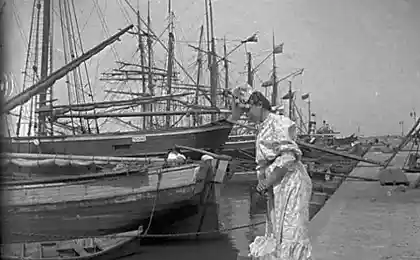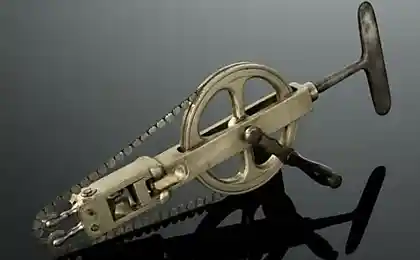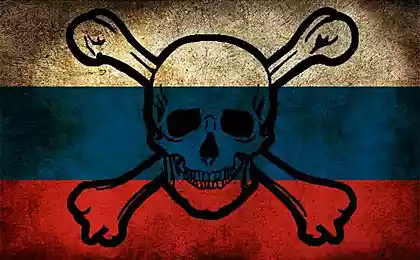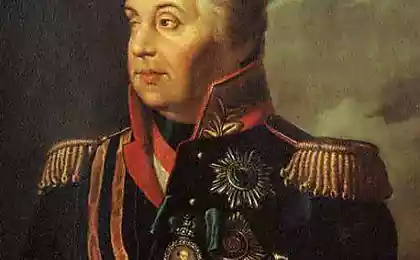1384
The first military photo report
In the yard in May 1855. Balaklava, Crimea. Today, it is a wonderful place for recreation of many people from all over Ukraine, and indeed the entire CNG, where the summer so cool swim in the gentle waters of the Black Sea, sunbathing on the beach, drink good Crimean wine, and in the evening a leisurely stroll along the waterfront. But in Maya 1855 everything was a little different, broads !!! About just do not worry, it's just a shot gun with the British ships fired at positions of Russian troops, and indeed is the Crimean War. Between Russia on the one hand, and the combined forces of Britain, France and Turkey on the other. On the Crimean War Much has been written, and the heroic defense of Sevastopol devoted many historical works, paintings by various artists, even a museum-panorama in the hero-city Sevastopol. But few people know that the battle of Balaklava and the subsequent defense of Sevastopol became the place of the first-ever military photo essay made an English photographer - Roger Fenton.
Employee British photographic company and the first secretary of the London Photographic Society in maya 1855 went to the shooting of the Crimean War at Sevastopol. Soon Roger Fenton received from Queen Victoria the title of photographer on the Crimean War, which secured him the assistance of the military command.
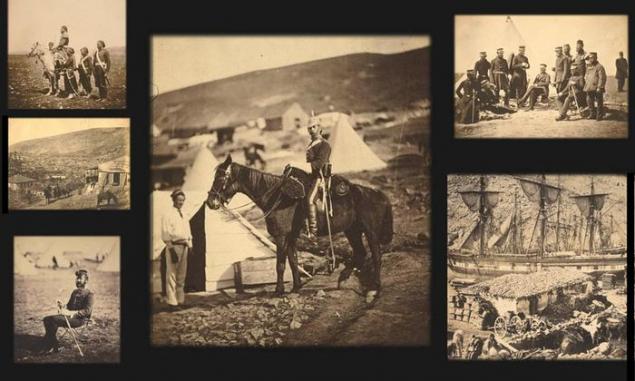
1. Type of Balaclava in the background are the British ships.
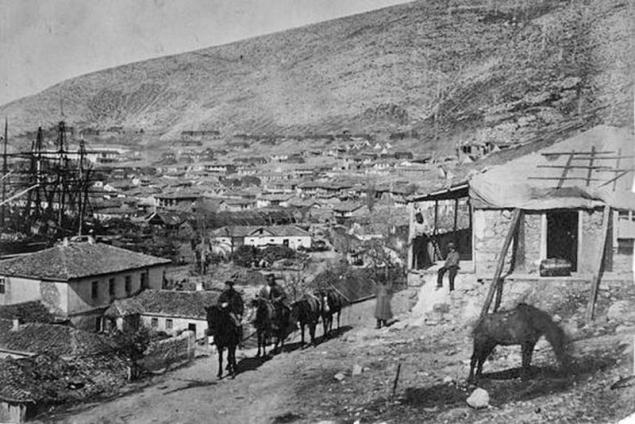
Apparatus chemicals glass were heavy and cumbersome. Fenton cleverly solved the problem of transportation: designed a two-horse "Photographic van" - at least that's what the inscription on its board. The wagon was at the same time and the dark cabin, so necessary for photographic sessions.
2. The same van.
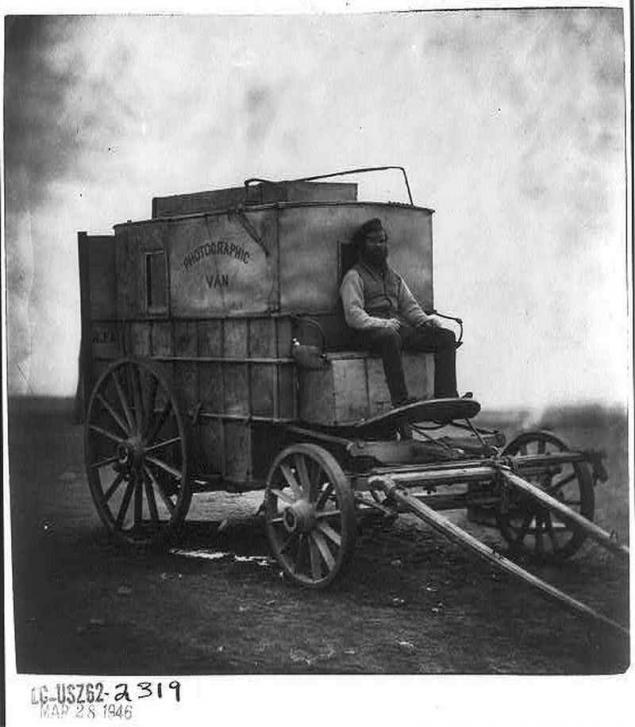
In May 1855 Fenton with his wagon appeared near Sevastopol in the short term to make up to 800 images of combat. From high temperature kolodion (substance used in those times when photographing) simmered in tanks inside the cabin it was particularly stifling, had to wait for cool days. However, the complexity of this sort happened with the English on location in Egypt. It is not known how long Fenton spent in the Crimea. After the withdrawal of Russian troops from Sevastopol in 1856 there appeared another Englishman photographer - James Robertson.
3. English military camp.
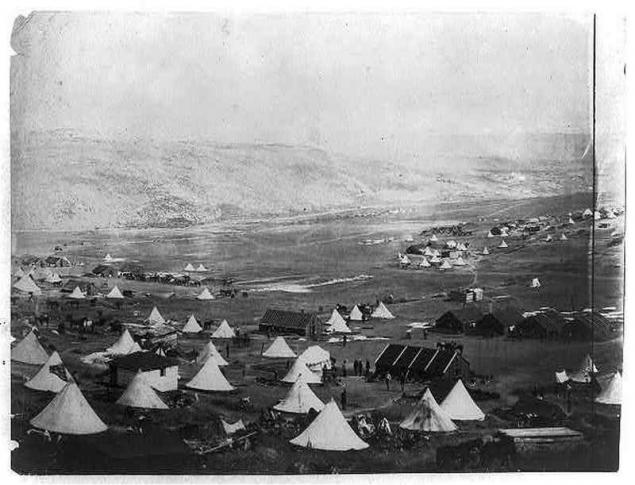
Shortly after the war in Paris and other European capitals went on sale sets of cards Fenton photographed and Robertson. The term "album" in those days did not exist, the pictures were sold in single sheets or sets as the engraving. The individual sheets were pasted on the mat, but the buyer sets made out to your liking. To do this, we had to go to special shops, where there was made a custom album.
4. English warship standing on the pier in Balaklava Bay.
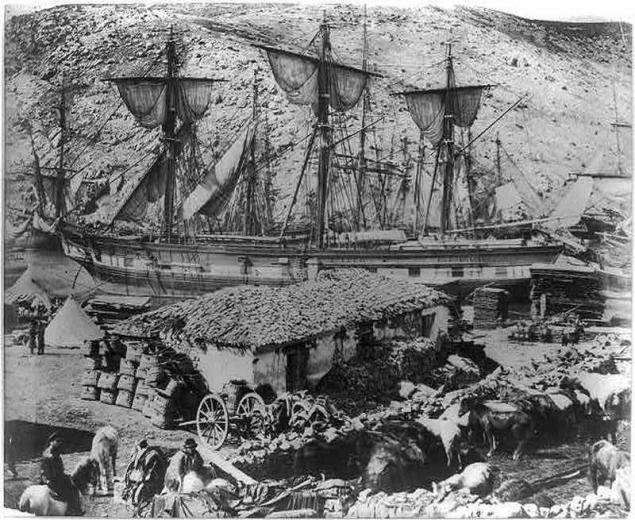
In the dense leaves imprints, measuring approximately 18x24 cm. They are poorly preserved due to photochemical drawbacks, many stained, faded or other almost took a yellowish tint. But some of them quite vividly conveys the legendary events of defense. Everything that could go - masts of ships, human figures - in pictures more blurred, but still objects transferred with great clarity.
5. Officers during the meeting.
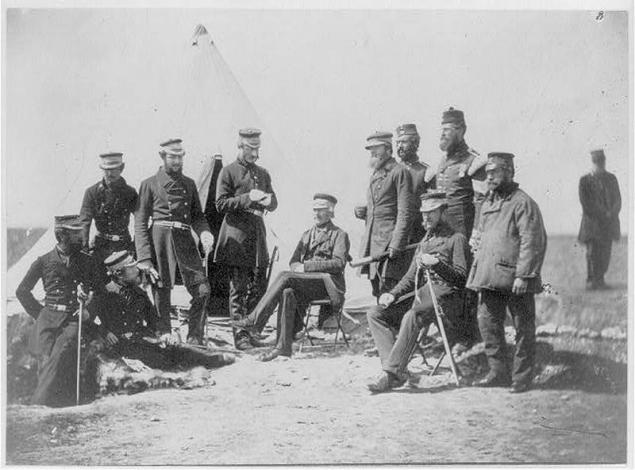
The first eight kinds of made near Balaklava, in the village of Kadikoy, housed the base camp and back-British hospitals. Then we see Balaklava bay with the remains of Hellenistic fortifications and against foreign ships landing. Here, army tents, English Cemetery, one of the batteries bombarding the city. But of particular interest are the pictures, which show the Russian redoubts after the withdrawal of troops.
6. Redoute after the battle.
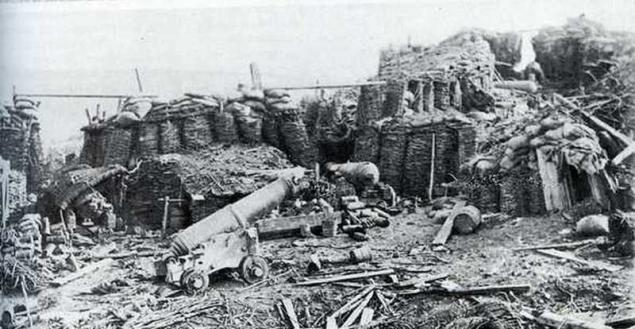
That mortar battery, like the one who had to command the lieutenant Leo Tolstoy. Next - view of the bay and close to it only ruins of buildings, so scarred the land. Special popularity enjoyed Tavern bridge, near which were located on the heights Fedyuhinskih French troops, and where a bloody battle took place "at the Black River" has not yielded any benefits one side.
7. He is the most famous bridge inn.
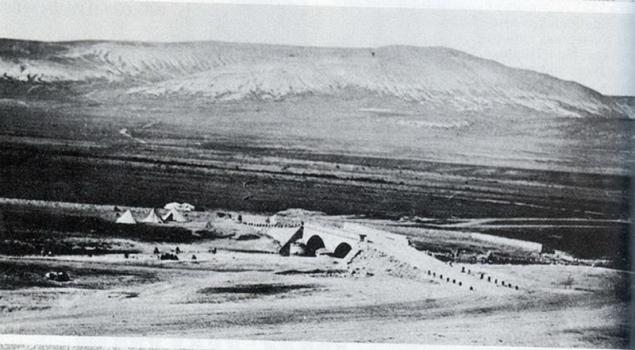
One of the scenes shows a crumbling dugout General Pamfilova on the 3rd bastion. There Vorontsov ravine - it accumulates Russian reserves, and its bottom is literally littered with enemy cores, so strong was the enemy gunfire. But even worse it looks Malakoff affected by the continuous bombardment. Let us remember that the tools mounted on the Mound, were taken from the ships sunk at the entrance to Sevastopol bay, so they Marine carriages, are not designed for movement on land.
8. Vorontsov ravine bombarded enemy nuclei.
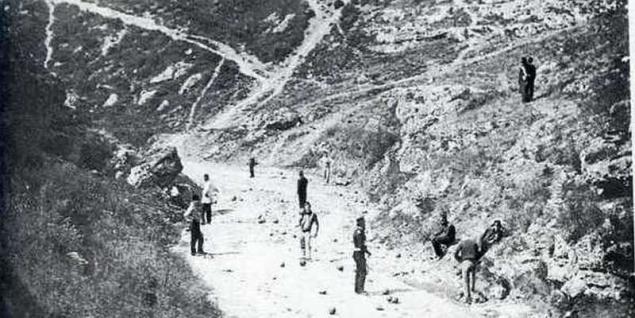
Here are the ruins of Sebastopol, broken ship docks, sunken boats, blasted the forts. Before the war the city had about fifty thousand inhabitants, but after the siege remained almost tenth. Here is a photo essay he first war in history, sad, and what do you want, a war is rarely fun to it and the war.
9. Ruins of the Sevastopol military barracks.
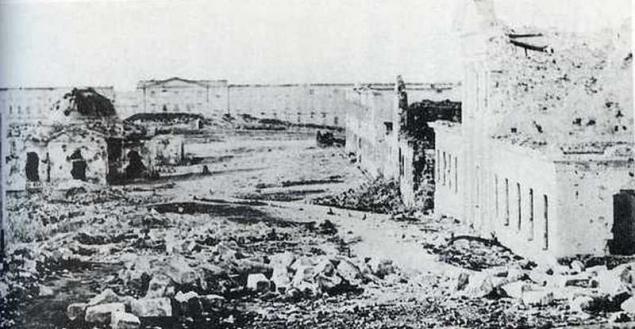
Finally some more interesting photos of more than a century ago.
10. Broken dugout commandant redoubt.

11. Russian battery after the bombing.
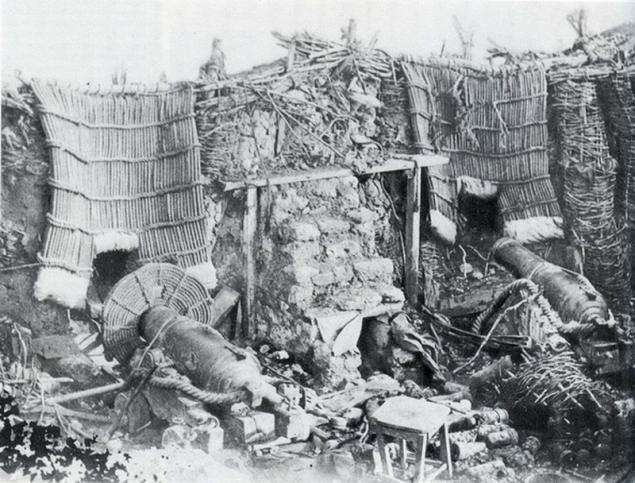
12. English soldier at rest, as they say: "War is war, and the rest of the schedule».
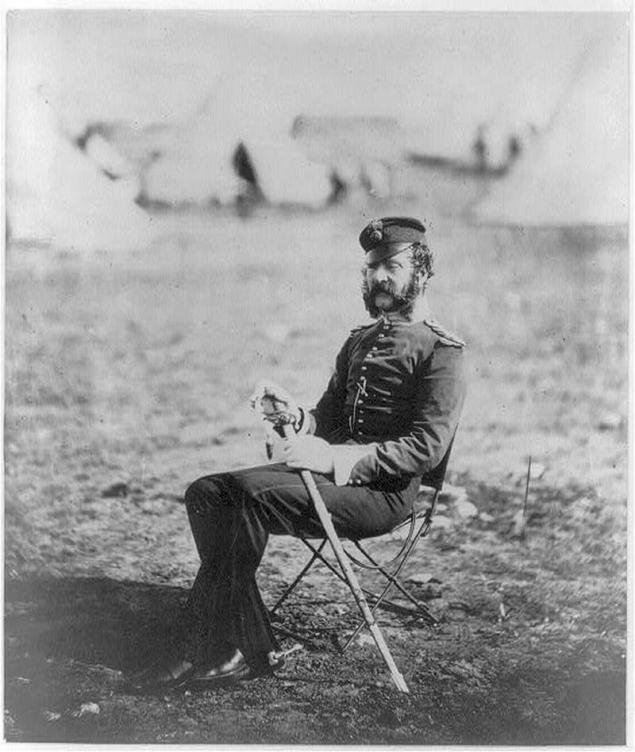
Source: travel-in-time.org
Employee British photographic company and the first secretary of the London Photographic Society in maya 1855 went to the shooting of the Crimean War at Sevastopol. Soon Roger Fenton received from Queen Victoria the title of photographer on the Crimean War, which secured him the assistance of the military command.

1. Type of Balaclava in the background are the British ships.

Apparatus chemicals glass were heavy and cumbersome. Fenton cleverly solved the problem of transportation: designed a two-horse "Photographic van" - at least that's what the inscription on its board. The wagon was at the same time and the dark cabin, so necessary for photographic sessions.
2. The same van.

In May 1855 Fenton with his wagon appeared near Sevastopol in the short term to make up to 800 images of combat. From high temperature kolodion (substance used in those times when photographing) simmered in tanks inside the cabin it was particularly stifling, had to wait for cool days. However, the complexity of this sort happened with the English on location in Egypt. It is not known how long Fenton spent in the Crimea. After the withdrawal of Russian troops from Sevastopol in 1856 there appeared another Englishman photographer - James Robertson.
3. English military camp.

Shortly after the war in Paris and other European capitals went on sale sets of cards Fenton photographed and Robertson. The term "album" in those days did not exist, the pictures were sold in single sheets or sets as the engraving. The individual sheets were pasted on the mat, but the buyer sets made out to your liking. To do this, we had to go to special shops, where there was made a custom album.
4. English warship standing on the pier in Balaklava Bay.

In the dense leaves imprints, measuring approximately 18x24 cm. They are poorly preserved due to photochemical drawbacks, many stained, faded or other almost took a yellowish tint. But some of them quite vividly conveys the legendary events of defense. Everything that could go - masts of ships, human figures - in pictures more blurred, but still objects transferred with great clarity.
5. Officers during the meeting.

The first eight kinds of made near Balaklava, in the village of Kadikoy, housed the base camp and back-British hospitals. Then we see Balaklava bay with the remains of Hellenistic fortifications and against foreign ships landing. Here, army tents, English Cemetery, one of the batteries bombarding the city. But of particular interest are the pictures, which show the Russian redoubts after the withdrawal of troops.
6. Redoute after the battle.

That mortar battery, like the one who had to command the lieutenant Leo Tolstoy. Next - view of the bay and close to it only ruins of buildings, so scarred the land. Special popularity enjoyed Tavern bridge, near which were located on the heights Fedyuhinskih French troops, and where a bloody battle took place "at the Black River" has not yielded any benefits one side.
7. He is the most famous bridge inn.

One of the scenes shows a crumbling dugout General Pamfilova on the 3rd bastion. There Vorontsov ravine - it accumulates Russian reserves, and its bottom is literally littered with enemy cores, so strong was the enemy gunfire. But even worse it looks Malakoff affected by the continuous bombardment. Let us remember that the tools mounted on the Mound, were taken from the ships sunk at the entrance to Sevastopol bay, so they Marine carriages, are not designed for movement on land.
8. Vorontsov ravine bombarded enemy nuclei.

Here are the ruins of Sebastopol, broken ship docks, sunken boats, blasted the forts. Before the war the city had about fifty thousand inhabitants, but after the siege remained almost tenth. Here is a photo essay he first war in history, sad, and what do you want, a war is rarely fun to it and the war.
9. Ruins of the Sevastopol military barracks.

Finally some more interesting photos of more than a century ago.
10. Broken dugout commandant redoubt.

11. Russian battery after the bombing.

12. English soldier at rest, as they say: "War is war, and the rest of the schedule».

Source: travel-in-time.org

